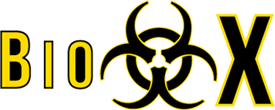As people start working through the recent fires’ aftermath that destroyed most of Lahaina and other parts of Hawaii, the long road of grieving, cleanup, and rebuilding is beginning. Once all the properties are searched for human remains and neighborhoods are released back to the families and business owners, people will be returning to sort through what is left of the homes, stores, and restaurants they once knew.
At Bio X Hawaii, we want to take a moment to share our expertise about the dangers of burned buildings with our Hawaii community to help protect the survivors from further harm and suffering.
Fire Hazards
When a property is burned like those in Lahaina and other parts of Maui were, there are many dangers present amidst the ash and burned wreckage. As these locations were homes we felt safe in before, we don’t necessarily think they can be as dangerous as they now are. From sharp objects hidden among the wreckage to tiny particles in the air that can damage our lungs, hazards to watch out for can include:
- Sharp objects: As fire burns materials, it can warp, change, destroy, and even move various objects. Household items such as knives can become mangled metal and a glass jar can be broken shards. When sorting through items, use extreme caution to not touch any sharp objects.
- Tripping hazards: With everything the fire brought down to the ground, there will be tripping hazards throughout the property. As you walk, be careful where you are stepping so you don’t fall and hurt yourself.
- Ash and small particles: The ash left after a fire consists of tiny particles that are easily relaunched into the air with the smallest movement of breath of air. These particles can then be easily breathed in and lodge themselves inside our lungs causing diseases and exasperating cases of asthma.
- Dangerous chemicals: In most homes and businesses are dangerous chemicals such as paint, cleaners, asbestos, and gas. Though burned, these dangerous chemicals are still there, just released into the surrounding environment in the ash, burned objects, water, and air.
- Mold: Water used to put out the fire, whether the initial fire or later hot spots, can cause mold to grow in the burned out home. When breathed in, mold can cause respiratory diseases and can damage the lungs.
- Falling objects: Objects and building structures previously sound can now fall without warning and the building is no longer safe to be. Only go in areas police and fire personnel have authorized as safe to walk in.
Protect yourself first
Before entering any burned area released by the police, try to wear as much protection as possible. Though supplies may be in short supply, every way you can protect yourself can prevent further injury and accidents during the cleanup process. These forms of protection can include:
- Protective eyewear
- N-95 mask or respirator
- Long sleeves
- Thick pants
- Steel toed shoes
- Rubber gloves
- Hard hat
Take care of your emotional health
Living through the fires and losing loved ones and property is a trauma only understood by those who lived it. What we at Bio X Hawaii do understand, though, is that going through damaged property can add another layer of emotional trauma and injuring yourself in the process, is more damaging still. When the cleanup process begins, do whatever you need to do to help yourself heal and not be further traumatized. Whether that is leaning on your surrounding community of friends and family, outside support, or taking breaks, protect your mental as well as your physical health.
Bio X Hawaii considers all of Hawaii our ohana
Here in Hawaii, ohana means more than just our biological family. Ohana means developing familial care for all humanity. At Bio X Hawaii, everyone who lost loved ones and property in the recent fires are our ohana.


